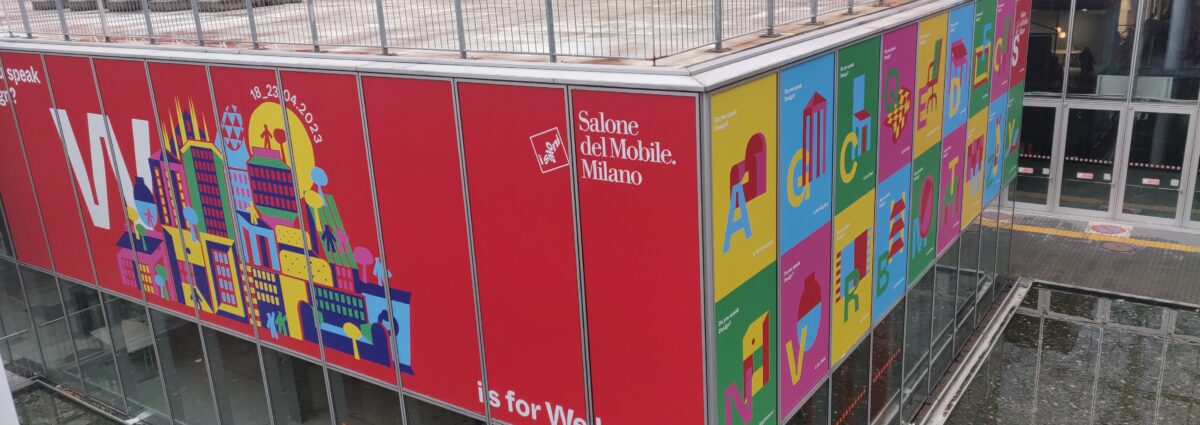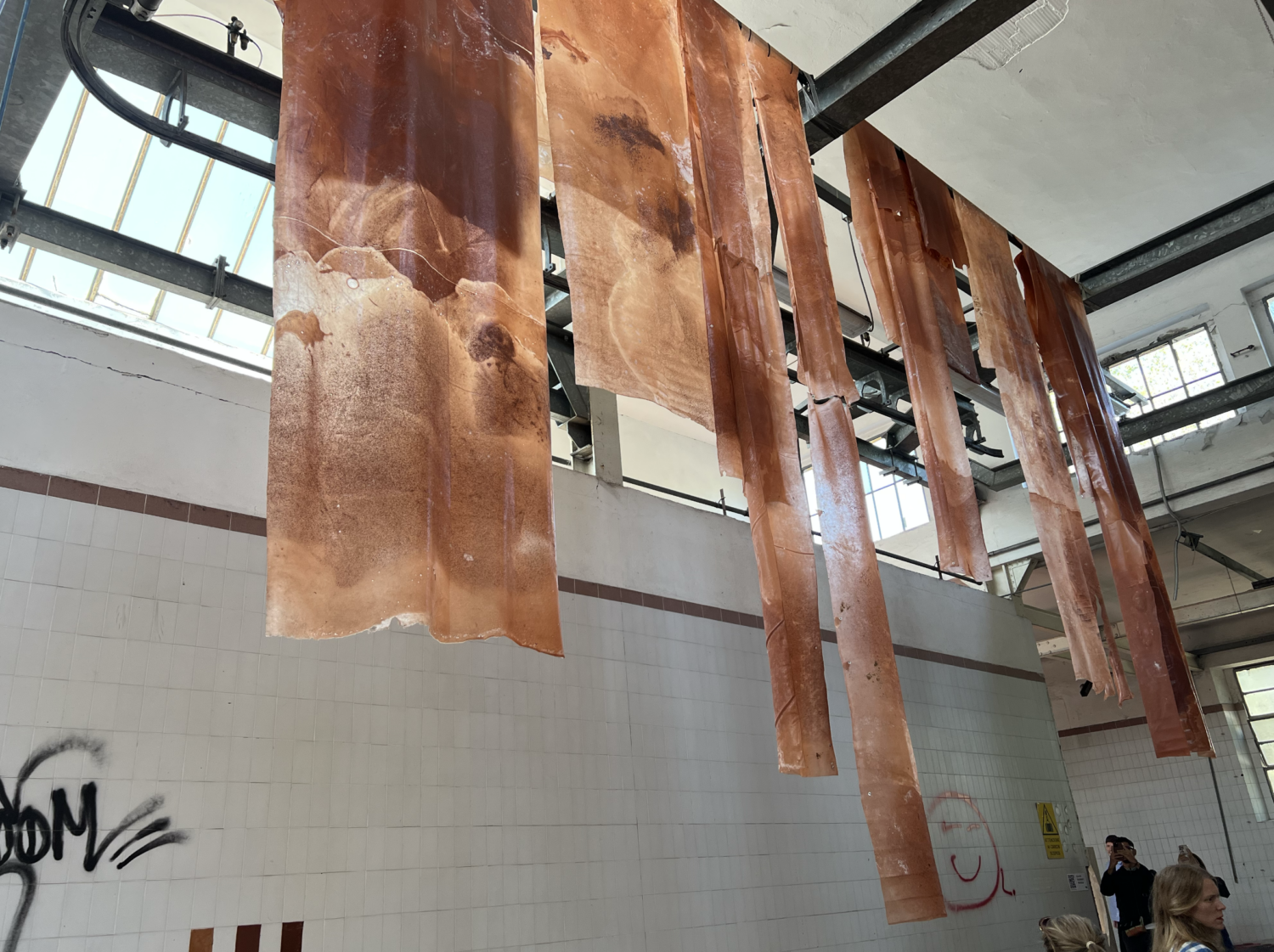Do you speak Design? After a three-year hiatus, Salone del Mobile 2023 returned to its traditional Spring dates, offering a full week of events, installations, and product launches during Milan Design Week, April 18–23. It was a one-of-a-kind chance to see what the world’s leading designers in the fields of furniture, lighting, textiles, and homeware have been up to recently, with an emphasis on creativity, innovation, and sustainability. Here are some noteworthy highlights from last week.
Walk The Talk
Brera Design District
The installation, conceived by Italo Rota, CRA-Carlo Ratti Associati, and Eni, transformed the Botanical Garden into a massive (3500 sq. m) living game board with multimedia effects that altered the space at different times of the day. It opened the floor for a public discussion on sustainable mobility, vehicle-sharing services, and alternative fuels. Today, cars and commercial vehicles can run on fuels derived from biogenic waste, such as cooking oil. Thus, as consumers, we can immediately contribute to the decarbonization of transportation by bringing used oil to a collection center.

Made by Fire
Triennale
In Czech culture, glass, porcelain, and ceramics hold a prominent position with a rich history. Project Made by Fire, prepared by the Moravian Gallery in Brno in cooperation with the Designblok festival, highlighted the importance of experimentation and creative courage while preserving craftsmanship and competitiveness. Furthermore, the installation compared the ecological sustainability of production, as evidenced by the reduced environmental impact of recycled porcelain tableware compared to pure porcelain and ceramic tableware.
View this post on Instagram
Brick Textiles
Alcova
Natural Material Studio collaborated with Polish designer Zuzanna Skurka to transform highly porous repurposed bricks deemed waste following demolition projects into soft, flexible, and even translucent textiles, unlike the bricks they are made from. These textiles are made from a combination of crushed bricks and Procel, a home-compostable, protein-based bioplastic comprised of a natural softener and pigments developed by the Studio. The material owes its strength, distinctly reddish hue, and texture to the bricks, creating unique swirly patterns on each slab produced randomly during the fluid casting process.
View this post on Instagram
Nike, ISPAnificio
In this former bread factory, Nike’s ISPA team presented their latest products: ISPA Mindbody (modular constructions for easy disassembly while using algae inks and a sock-like 360 Flyknit upper made with 60% less waste), ISPA Universal (made from Bio-EVA while featuring replaceable components for extended product life with cork insoles), and ISPA Link Axis (designed with the end in mind enabling circularity) in three separate rooms. Manufactured entirely without glue or adhesives, each shoe investigates how we can use existing resources to reach new and better outcomes. In the ISPA Mindbody, the Flyknit padding underfoot mimics the sensation of being barefoot on grass or pine needles. The ISPA Link Axis shoe can be disassembled entirely at the end of its life, rendering its components easier to process, recycle, and reuse. Using AI, the team created ISPA Universal with a digital mashup of four heritage silhouettes – the Nike Solarsoft HTM (2010), Air Max 270 (2018), Air Zoom Pegasus 37 (2020), and Air Zoom Type (2020).
View this post on Instagram
Material Magic
Isola
Natural fibers such as hemp are frequently used as reinforcement with a synthetic binder, rendering the blend material non-circular. This exhibit proposed a series of samples and prototypes, exploring the potential for combining alternative natural binders, such as magnesium and potato starch, with hemp fibers in order to enable a better end of life.
View this post on Instagram
The Elephant In The Room
Brera Design District
This installation dissects textiles and presents the past, present, and future of textile creation, revealing what lies behind the hidden labels. BYBORRE, in collaboration with Castello Sforzesco and other partners, is evaluating the works of heroes shaping the future of the textile supply chain and presenting the stories of the innovators behind the change.
View this post on Instagram
Tatami Refab Project
Venue: SaloneSatellite
Tatami mats, used in Japanese homes for centuries, are woven from fragrant plants and can regulate humidity and eliminate odors. Using 3D printing, this project preserved the cultural significance of Tatami and reintroduced it to modern life. The Japanese design studio Honoka has developed a new material by combining biodegradable resin with Igusa grass harvested from old Tatami mats. The fabric is then woven using a 3D printer and can be utilized to create furniture and household goods.
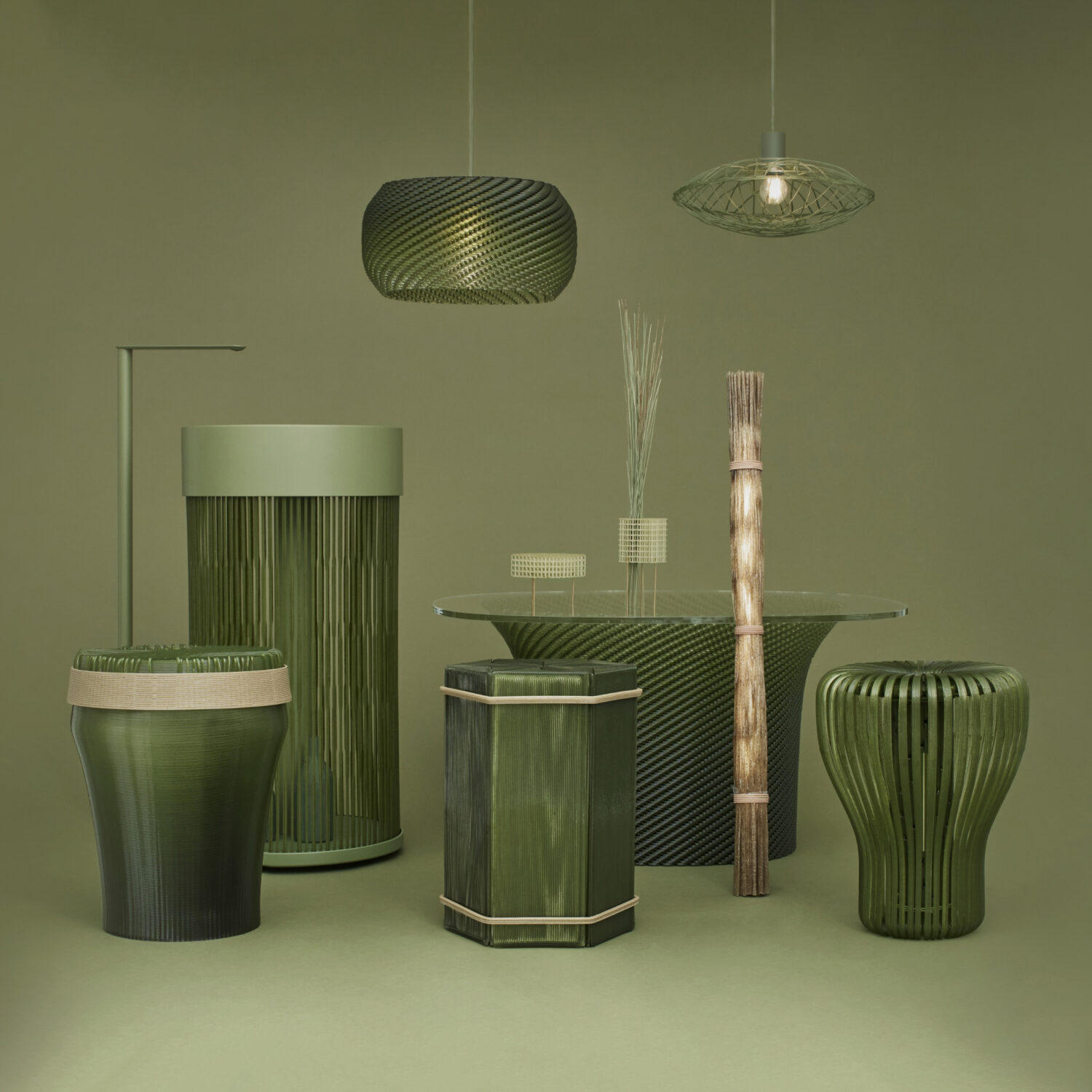
Connessioni Circolari
Venue: (Superstudio/Fuorisalone)
Alisea is transforming industrial waste that would otherwise be destined for landfill into one-of-a-kind design objects. The work began with Zantech®, the only material in the world comprised of 100% recycled graphite powder. Today, the company has expanded its portfolio by blending it with bio-based (Sughera from Mixcycling with 70% recycled cork) and recycled (PBT by Penneli Faro with 60% recycled content from post-consumer bottles) resins for making different consumer products. The company has also developed g_evolution, a metal finishing treatment, and g_ink, a water-based paint for wood and other substrates using upgraded recycled graphite.
View this post on Instagram
Zero Bag
Venue: (Superstudio/Fuorisalone)
The work of the four LEXUS Design award winners of the 2023 Edition is currently on display at Superstudio. Kyeongho Park and Yejin Heo’s Zero Bag, from the Republic of Korea, was inspired by the country’s custom of washing newly purchased clothes to remove any chemicals before wearing them. The new packaging disperses washing detergents while dissolving in water, which can remove chemicals from products while reducing plastic waste. Before wearing the garments for the first time, washing both the garments and their packaging after receiving them in a bag is possible. In addition, the environmentally friendly packaging design has been expanded to include fruits and meal kits, which are also typically washed before consumption.
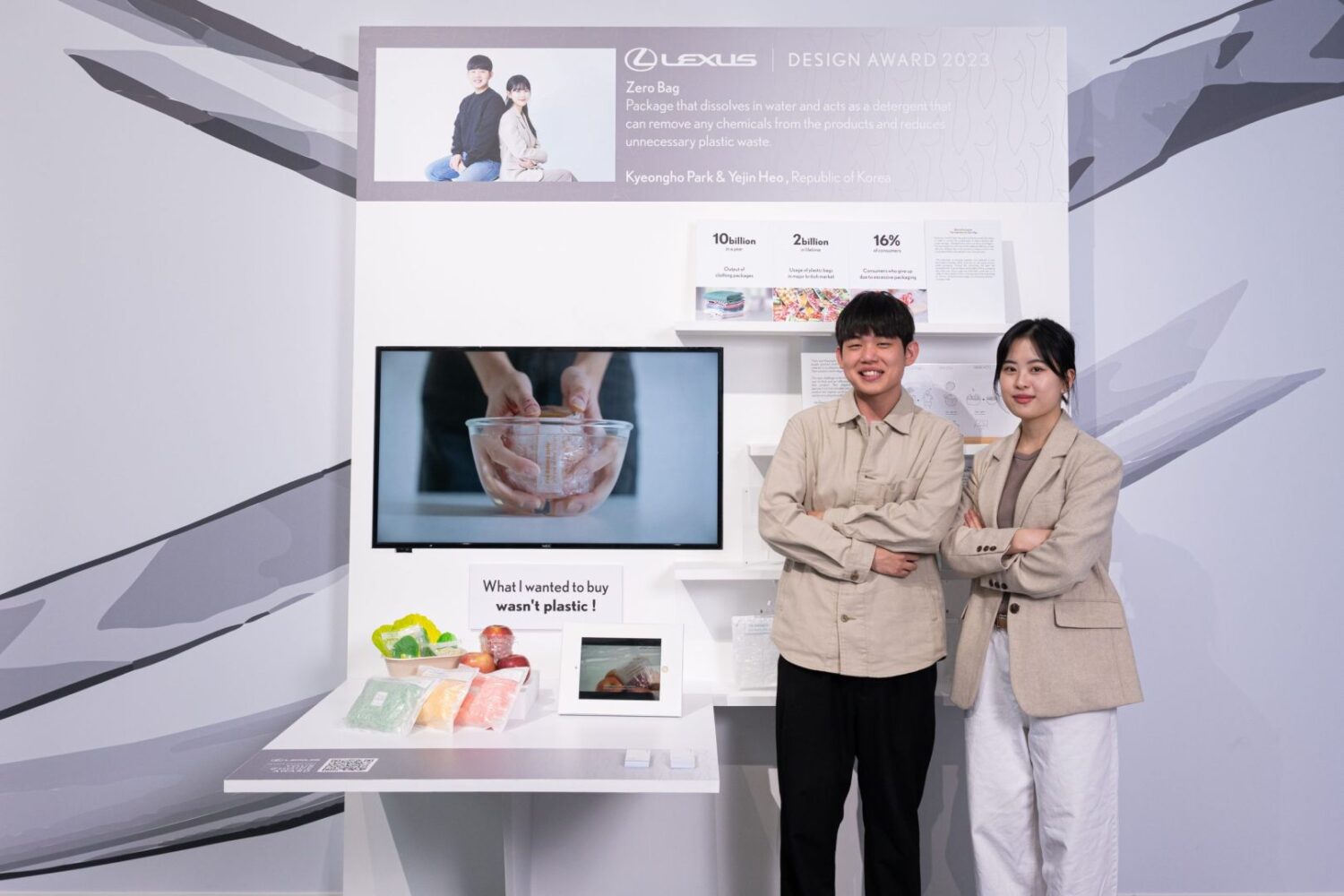
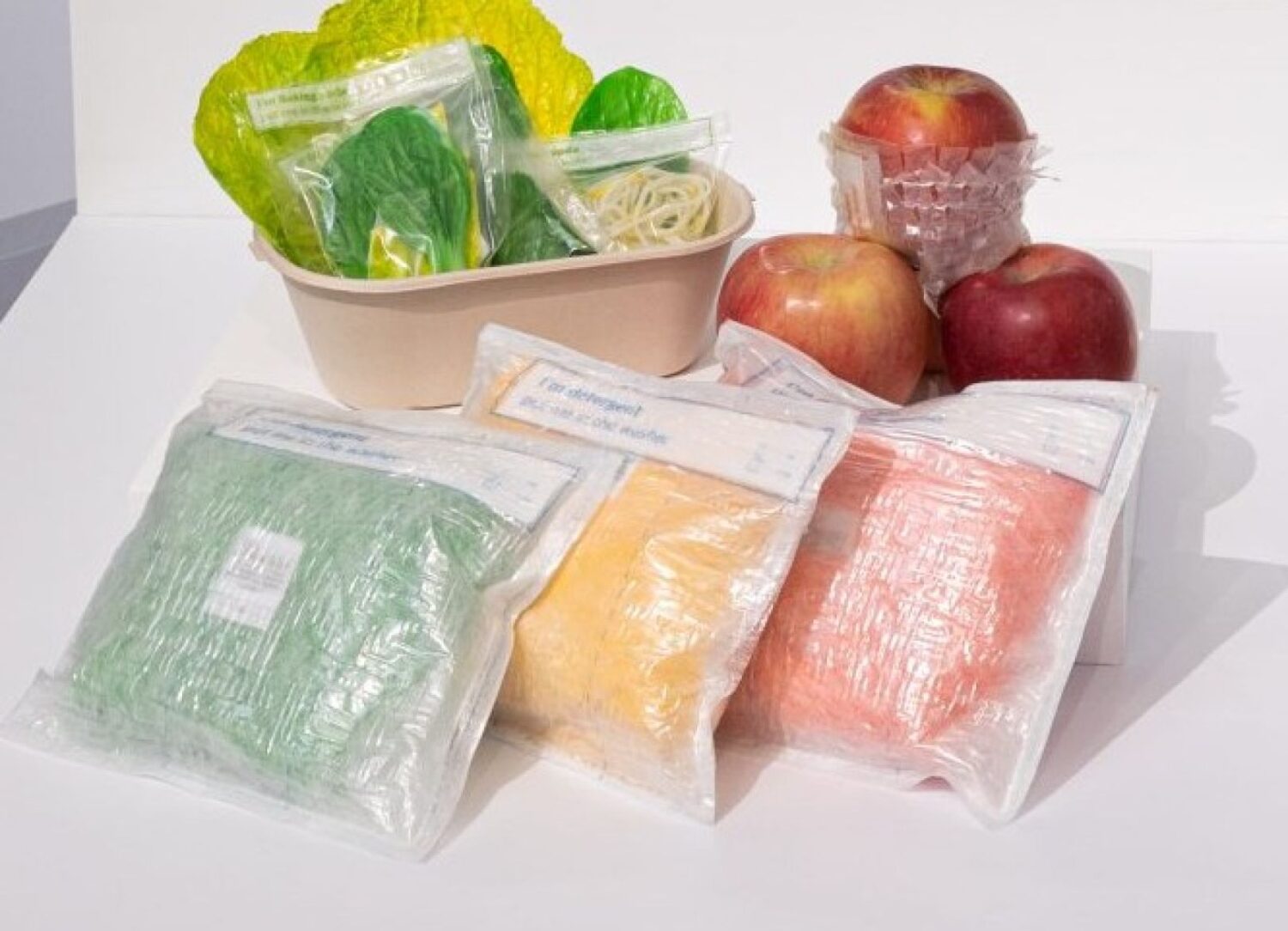
CIRC X ZARA
During Milan Design Week, Zara launched a first-of-its-kind capsule collection for women, in collaboration with Circ, made from recycled polycotton waste, where both elements of polycotton are recovered. The two companies have produced lyocell garments from 50% recycled polycotton textile waste and polyester garments from 43% recycled polycotton textile waste. This partnership represents an important step toward making circularity the new norm. The company also committed to introducing collection and recycling systems to reuse all the materials used in its store displays. Next year, the retailer claims all its stores will have been fitted with containers for collecting used clothing to be reused, recycled, or sent to charity.
View this post on Instagram
View this post on Instagram
Nature Construction Kit
Venue: Masterly – The Dutch in Milano
This interactive installation showcased 50 bio-based building materials in 50 modular structures. It created a tactile learning environment that allows people of various knowledge levels, backgrounds, and ages to learn more about building with locally available sustainable materials. Beyond education, it seeks to shift the sustainability dialogue from “Is this possible?” to “How are we going to do this together?”
View this post on Instagram
PROWL Studio, Expect Death
California-based PROWL studio popped up again this year at Alcova to debut their ‘PEEL’ chair, the first injection-moulded chair that can be composted. For this design, they collaborated with Chicagoland-based M4 factory and made the design entirely from a byproduct of hemp and cannabis industrial processing. This design further shows that we must consider end of life when designing new products.
View this post on Instagram
